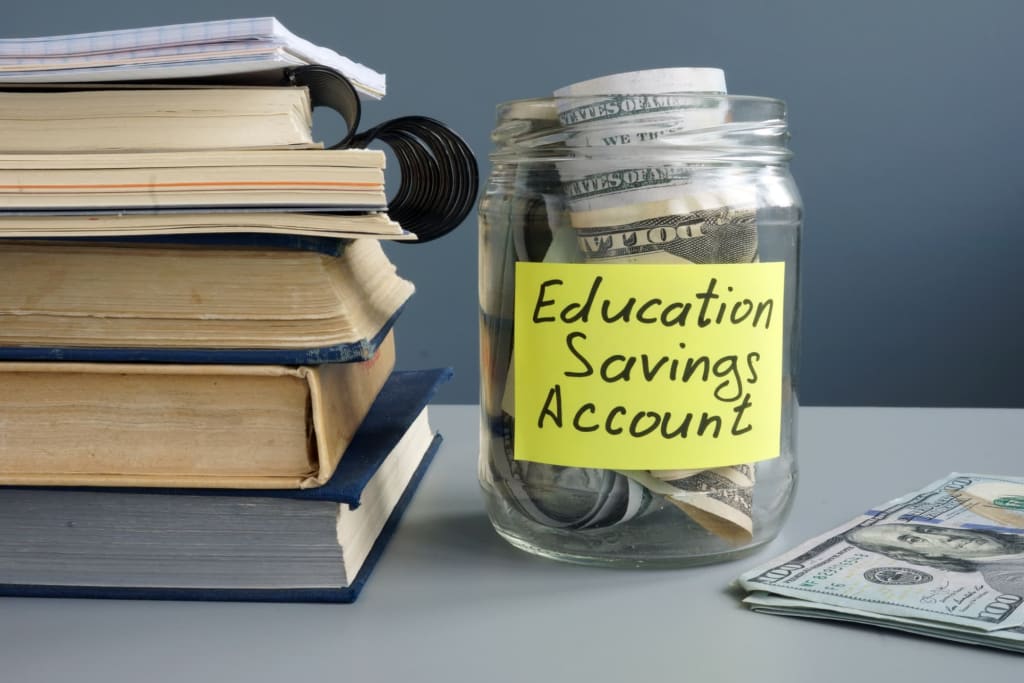An investment account is also known as a brokerage or securities account. It’s where people buy and keep things like stocks, bonds, and index funds. There are many kinds of investment accounts, each with its own goal. These include standard brokerage accounts, retirement accounts, and even accounts for kids and education.
Choosing the right account is key for investors. It depends on their savings goals, who can own the account, and tax situations. This article will guide you through the different types of investment accounts. It aims to help you pick the best one for your financial goals and needs.
Key Takeaways
- Investment accounts let people buy and keep things like stocks, bonds, and funds.
- There are many types of investment accounts, each with its own purpose and rules.
- It’s important to pick the right account based on your savings goals, taxes, and future financial plans.
- Common investment account options include standard brokerage accounts, retirement accounts, and accounts for kids and education.
- ABLE accounts offer investment and savings chances for people with disabilities.
Standard Brokerage Accounts
A standard brokerage account lets investors pick from many investment options like stocks, mutual funds, and bonds. Money made from these investments is taxed in the year it’s earned. This is unlike retirement accounts.
Cash Accounts
Cash accounts are the simplest kind of brokerage account. They let investors buy and sell securities with the cash they have. You need to have enough cash to buy securities. These accounts don’t let you borrow money to invest more.
Margin Accounts
Margin accounts let investors borrow money to buy securities. This borrowed money is called “margin.” It helps investors invest more than they could with just their cash. But, using margin can be risky, as investors could lose more than their initial money if their investments go down.
| Account Type | Borrowing Capability | Tax Implications |
|---|---|---|
| Cash Account | No borrowing allowed | Gains and income are subject to taxes |
| Margin Account | Investors can borrow money to purchase securities | Gains and income are subject to taxes |
To open a brokerage account, investors must meet certain requirements from the financial institution. These can include a minimum balance, proof of identity, and more. Knowing about the different types of brokerage accounts helps investors make better choices for their investments and risk management.
Retirement Accounts

Retirement accounts like IRAs and 401(k)s are key for long-term financial planning. They offer tax benefits that help your savings grow. This makes them crucial for a secure retirement.
Traditional IRAs let you put in pre-tax dollars. This means your contributions lower your taxable income right away. But, you’ll pay taxes when you take money out in retirement. Roth IRAs work differently. You put in money after taxes, but you won’t pay taxes on withdrawals later.
Who can use these accounts and how much you can put in changes based on your income, age, and job. Knowing these rules helps you get the most from your retirement savings.
| Retirement Account | Tax Treatment of Contributions | Tax Treatment of Withdrawals |
|---|---|---|
| Traditional IRA | Pre-tax | Taxable |
| Roth IRA | Post-tax | Tax-free |
| 401(k) | Pre-tax or post-tax (Roth 401(k)) | Taxable or tax-free (Roth 401(k)) |
These accounts are made to help you save and invest for the future. They come with tax benefits. By knowing about the different accounts and who can use them, you can make smart choices for your financial future.
Types Of Investment Accounts for Kids

Many investment accounts need the owner to be 18 or older. But, there are ways to invest for minors too. Custodial brokerage accounts and custodial IRAs let parents invest for their kids. When the kids turn 18, the money goes to them.
Custodial Brokerage Accounts
Custodial brokerage accounts, like UGMA and UTMA, let adults invest for a child. The adult in charge of the account keeps control until the child is 18 or 21, based on the state. These accounts help parents start saving for their kids’ futures.
Custodial IRAs
Parents can also open custodial IRA accounts for their kids. These can be Roth or traditional IRAs. They help kids save for their future. The amount you can put in depends on the child’s earnings, and the account is the child’s, not the custodian’s.
Choosing a custodial brokerage account or a custodial IRA is a smart move for your child’s future. It teaches them about saving and can help them start building wealth early. By opening a kid’s investment account, you’re giving them a great start in life.
Education Accounts

When saving for education, 529 plans and Coverdell Education Savings Accounts (ESAs) are top choices. These accounts help families save for college, graduate school, and even K-12 tuition. They offer tax benefits that make saving easier.
A 529 plan lets you grow your money without paying taxes on it. You can use the money tax-free for education costs. Most states have their own 529 plans, which you can use at schools across the country. This makes 529 plans a great option for many families.
The Coverdell ESA also grows your money without taxes and lets you use it tax-free. It covers a wide range of education costs, from elementary school to college and beyond.
| Feature | 529 Plan | Coverdell ESA |
|---|---|---|
| Tax-deferred Growth | Yes | Yes |
| Tax-free Withdrawals | Yes | Yes |
| Contribution Limits | High (state-specific) | Low ($2,000 per year) |
| Investment Options | Limited to plan offerings | Broad range of investments |
| Eligible Expenses | College, graduate school, and K-12 tuition | College, graduate school, K-12 tuition, and other qualified expenses |
529 plans and Coverdell ESAs both offer tax benefits for education savings. The choice between them depends on your needs and what you prefer. Knowing the differences helps families pick the best account for their goals.
ABLE Accounts

ABLE accounts, also known as 529A accounts, are special savings for people with disabilities. They let individuals with disabilities save and invest for their future. These accounts help cover expenses without losing public benefits like Medicaid.
Like 529 education plans, ABLE accounts grow investments tax-free. Withdrawals for disability expenses are also tax-free. To qualify, the disability must have started before the person turned 26 (now 46 since 2026). The person must also get SSI or SSDI or have a doctor’s note confirming their disability.
ABLE accounts have changed the game for people with disabilities. They offer a tax-advantaged way to save and plan for the future. These accounts let people with disabilities keep their public benefits and build financial security and independence.
“ABLE accounts have been a true game-changer for individuals with disabilities, allowing them to save and invest for their future without jeopardizing their vital public benefits.”
ABLE accounts are great for saving for a home, education, or just for the future. They offer a special and tax-friendly way to reach your financial goals. By learning about these 529A accounts, people with disabilities can take charge of their finances and open new doors.
Also Read : Top Dividend Stocks For Long-Term Investment Success
Conclusion
Investment accounts come in many types, each with its own benefits and things to think about. They’re great for saving for retirement, a kid’s education, or just growing your wealth. Knowing the different kinds can help you pick the right one for your money goals and life situation.
There are many investment accounts to choose from, like cash and margin accounts, and even special ones for education and disabilities. Each has its own rules about who can use it, how taxes work, how much you can put in, and when you can take money out. By looking at these differences, you can find the best one for your money goals.
Choosing the right investment account is all about knowing your finances, how much risk you can handle, and what you want to achieve in the long run. With the right choice, you can work towards a more secure financial future. This could mean saving for retirement, a kid’s education, or building wealth for your family.
FAQs
Q: What are the common types of investment accounts available for investors?
A: There are several common types of investment accounts, including taxable brokerage accounts, individual retirement accounts (IRAs), Roth IRAs, education savings accounts, and health savings accounts. Each account type has unique features and tax implications that suit different investment goals.
Q: How do I open a brokerage account?
A: To open a brokerage account, you typically need to choose a brokerage firm, provide personal information, complete an application, and fund the account. Many brokerages offer online services that make the process quick and convenient.
Q: What is the difference between a traditional IRA and a Roth IRA?
A: The main difference is how and when you pay taxes. Contributions to a traditional IRA may be tax-deductible, and taxes are paid upon withdrawal in retirement. In contrast, Roth IRA contributions are made with after-tax dollars, allowing for tax-free withdrawals in retirement if certain conditions are met.
Q: What are education savings accounts, and how do they work?
A: Education savings accounts, like 529 plans, are tax-advantaged savings vehicles designed to help families save for future education expenses. Contributions grow tax-free, and withdrawals for qualified education expenses are also tax-free.
Q: What is a custodial account, and who can open one?
A: A custodial account is an investment account set up for a minor, managed by an adult custodian until the minor reaches a certain age. It can be used to invest for the minor’s future needs, such as education or other expenses.
Q: What are the benefits of using a health savings account (HSA)?
A: Health savings accounts offer triple tax advantages: contributions are tax-deductible, earnings grow tax-free, and withdrawals for qualified medical expenses are also tax-free. HSAs are a great way to save for healthcare costs while reducing your taxable income.
Q: Can I invest in mutual funds or ETFs through my investment accounts?
A: Yes, most investment account types, including taxable brokerage accounts and IRAs, allow you to invest in mutual funds and exchange-traded funds (ETFs). These investment products can help diversify your portfolio and meet your investment goals.
Q: What should I consider when determining my investment goals?
A: When setting your investment goals, consider factors such as your time horizon, risk tolerance, and financial situation. Your investment objectives will influence the types of accounts and investment products that are most suitable for you.
Q: What are the tax implications of investing in a taxable brokerage account?
A: In a taxable brokerage account, you are subject to capital gains taxes on any investment gains when you sell securities. Additionally, dividends and interest earned are taxable in the year they are received. It’s essential to understand these implications when planning your investment strategy.




